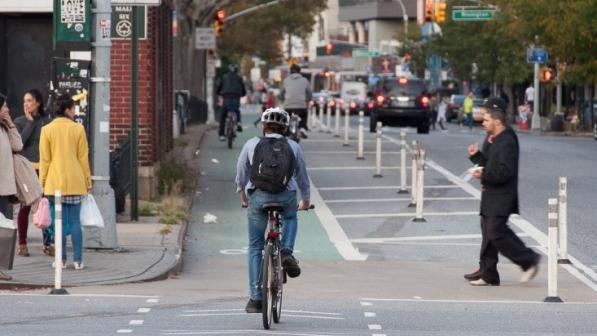How the new Towns Fund could improve cycling

Many towns in England have been struggling economically for some time. Online shopping and out-of-town, mega-supermarkets have taken their toll, not to mention the latest hit, Covid-19.
Thankfully, the £3.6 billion Towns Fund is there for 100 of them, and so is active travel as long as councils write it firmly into their bids.
Towns can apply for up to £25 million each (more in exceptional cases), and the Government specifically says that supporting sustainable transport is one of the best uses for it.
The Fund could make a colossal difference: the current spend per head on walking and cycling is said to be about £10 in England outside London, but the Fund could yield far more. A town like Margate, for example, would have almost £400 per head to play with, giving them real scope to invest generously active travel.
A town like Margate, for example, would have almost £400 per head to play with, giving them real scope to invest generously in active travel.
Cherry Allan, Cycling UK campaigns information officer
There will be other calls on the money, of course, but cycling and walking complements rather than competes with them, and helps local economies regenerate and thrive (see overleaf).
So, if you’re campaigning in any of the 100 towns (see map below), now is the perfect moment to urge your Town Deal Board to put forward any ‘shovel ready’ plans and/or new ideas, plus proposals to make any worthwhile temporary cycle/pedestrian-friendly Covid-19 infrastructure permanent.
What is the Towns Fund?
- The Ministry of Housing, Communities & Local Government (MHCLG) is inviting 100 selected towns in England to apply for a share of £3.6 billion (£25m each, more in exceptional cases).
- The aim is “…to drive the sustainable economic regeneration of towns to deliver long term economic and productivity growth.” The growth needs to be ‘clean’, in view of the UK’s legally binding commitment to achieve net zero greenhouse gas emissions by 2050.
- Deprivation and poor transport are among the specific problems MHCLG wants to address and, more recently, the impact of Covid-19 on local economies and retail.
- A town’s proposals need to be set out in a Town Investment Plans(TIP).
The fund’s key features
- Towns have until 13 July to decide whether they’d like to submit TIPs and, if so when. They can choose between three ‘cohorts’ (31 July, end of October or end of January 2021).
- This is not a competitive fund – the money is there if a town’s application is approved.
- The funding is primarily capital (i.e. for long-term assets).
- TIPs should be developed with input from the community (the Town Deal Board, in fact, ought to include community/local voluntary community sector representatives).
What the guidance on TIPs says about sustainable/clean/active transport
- “There may be […] opportunities to make decisive changes for the long term, such as investing in sustainable modes of transport to take advantage of behaviour changes caused by lockdown.”
- The MHCLG lists “new or upgraded cycle and walking routes’ under interventions to help meet some of the ‘target outcomes’ (i.e. affordability, convenience, reliability, and sustainability of travel options, reduced congestion and “enhanced high street and town centre experience that prioritises the health, safety and mobility of pedestrians”).
- “… clean transport, including cycling infrastructure” is mentioned as a ‘cost effective’ intervention.
What could cycling and walking do for the 100 towns?
Cycling and walking work for the local economy
- Cyclists visit local shops more regularly, spending more than users of most other modes of transport.
- Per square metre, cycle parking delivers five times higher retail spend than the same area of car parking.
- A compact town optimised for walking and cycling can have a “retail density” (spend per square metre) 2.5 times higher than a typical urban centre”.

Cycling and walking are clean and support clean growth



